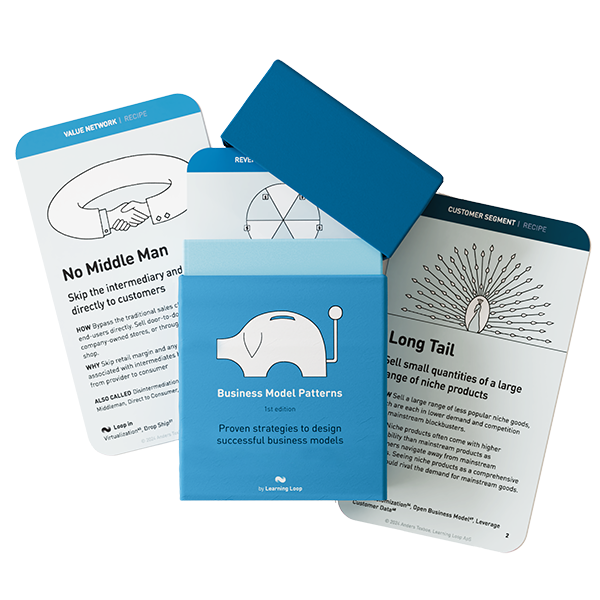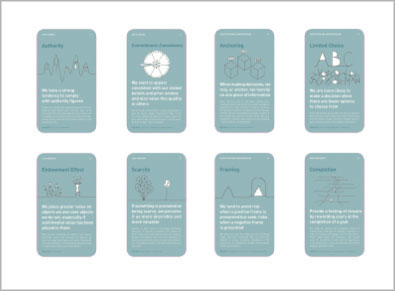Business Model Generation: Value proposition
No Frills
Deliver a bare minimum product to compete on a low price

How: By removing luxurious additions, customers can be offered lower prices. Sharing cost savings with customers, the result is usually a customer base with lower purchasing power or willingness.
Why: Gain access to a large customer base when standards of competitors can be trimmed.
No Frills is a business model that aims to reach a broad, price-sensitive audience by offering minimal products and services at significantly lower prices. This strategy relies on consistently adjusting processes to minimize costs and consistently utilizing production capacities through standardization of offerings. By optimizing distribution through methods such as Self-Service, No Frills is able to maintain profitability in the mass market. The key to success in this model is to focus on trimming the value proposition in areas where the greatest cost reduction can be achieved.
Where did the No Frills business model pattern originate from?
Henry Ford is widely recognized as a pioneer of the No Frills business model, having introduced his famed Model T in 1908 at the remarkably low price of $850. Ford was able to achieve this price point through the implementation of large-scale manufacturing techniques and the use of assembly lines, which allowed for efficient production but limited customization options for customers. The Model T’s simple construction, featuring a 20 horsepower engine on a steel chassis, also contributed to its affordability. This strategy proved extremely successful, as the Model T became the best-selling car in the United States by 1918 and saw over 15 million units sold by the time production ceased in 1927.
Applying the No Frills business model
The No Frills business model is well-suited for markets with cost-conscious customers, as these consumers are highly sensitive to price and will only consider purchasing products and services at a sufficiently low cost. To effectively utilize the No Frills model in these markets, it is important to take advantage of economies of scale and standardize products, processes, and services in order to reduce costs. Emerging markets, with their focus on “frugal” products, are particularly fertile ground for No Frills offerings. The guiding principle of this model is the adage “less is more.”
The Cost Advantage
A business may leverage the cost advantage when it is able to produce a product or provide a service at a lower cost than its competitors. This advantage can be applied in two ways: by lowering prices below the competition to attract more customers and gain market share, or by maintaining prices equal to the competition while enjoying a lower cost structure and increased profitability.
To establish a cheap cost structure, businesses may utilize low-cost raw materials, sustainable processes and technologies, efficient distribution methods, low-cost sales strategies, outsourced services, and lean manufacturing techniques.
Low Cost Design
There are two main design models for low cost products:
- Low cost adaptation, which involves reducing non-essential functions of an existing product to minimize cost while minimizing reduction of client utility
- Smart low cost design, which involves designing a product that meets both the desired functions of the customer and a cost goal while maximizing client utility.
Both of these models require a clear understanding of the main function of the product in order to avoid compromising functions that provide high utility to the client. They also emphasize the importance of considering low cost design as a design issue rather than solely a production and operational efficiency issue.
Allow yourself to specify cost reduction as a design goal rather than a general company objective.
Real life No Frills examples
Ibis Budget Hotels
No mini-bars, limited opening hours for receptions, and smaller rooms to clean allow renting out rooms for a bargain price.
McFit
With no reception, fitness classes, cafés, or saunas, the gym chain manages to stay cheap and open 24/7.
Southwest Airlines
Pioneered the low-cost carrier model in the 1970s by offering cheap fares with minimal amenities such as seat reservations, meal service, and travel agency booking assistance. Rather than using major airports, they operate flights to smaller, peripheral airports with lower airport taxes. This model has drastically changed the airline industry, with an estimated every second flight in Europe being operated by a low-cost carrier.
McDonald's
In the 1940s, the company implemented drastic changes such as reducing the menu to under ten items, using paper plates, and introducing a cheaper burger preparation method. This resulted in a reduction of waiting staff and the introduction of Self-Service. The No Frills concept helped the restaurant recover and remains a part of its philosophy today.
Aldi and Lidl
The European supermarkets sell groceries at low prices by avoiding branded products and limiting product selection on shelves. This strategy results in high turnover, which allows for savings on inventory costs and negotiating leverage with suppliers. To further cut costs, these stores often have minimal decor and staff.
Trigger Questions
- Have customers become used to an over-engineered offering that could be redesigned to be much simpler?
- What basic and core customer needs can you focus on in a standardized solution with little variety?
- On what occasions is it imperative to differentiate ourselves?
- How can we devise unorthodox approaches to targeting cost-sensitive emerging markets that are impacted by over-engineered societal constraints?
- Where in the value chain can we eliminate waste and lower costs?
- How can we achieve economies of scale in purchasing, production, R&D, and distribution?
- Is it possible to fundamentally redesign our processes to achieve cost savings?
Proven business models that have driven success for global leaders across industries. Rethink how your business can create, deliver, and capture value.
Get your deck!Related plays
- Business Model Navigator by Karolin Frankenberger and Oliver Gassmann
- No Frills by Wikipedia
- Low Cost Business Model by Daniel Pereira
- Strategies to fight low-cost rivals by Nirmalya Kumar

